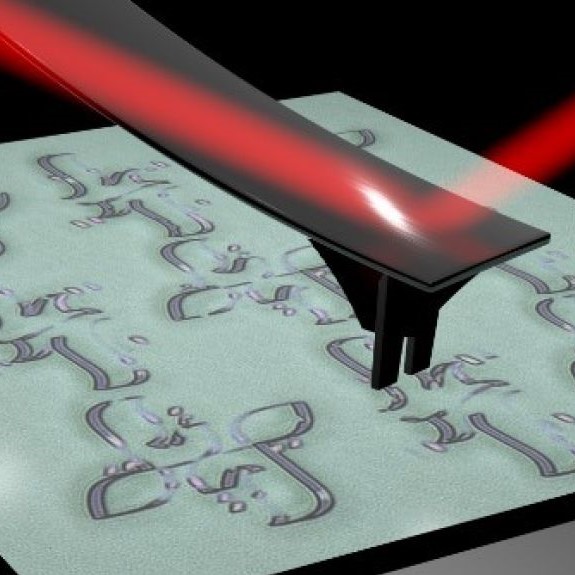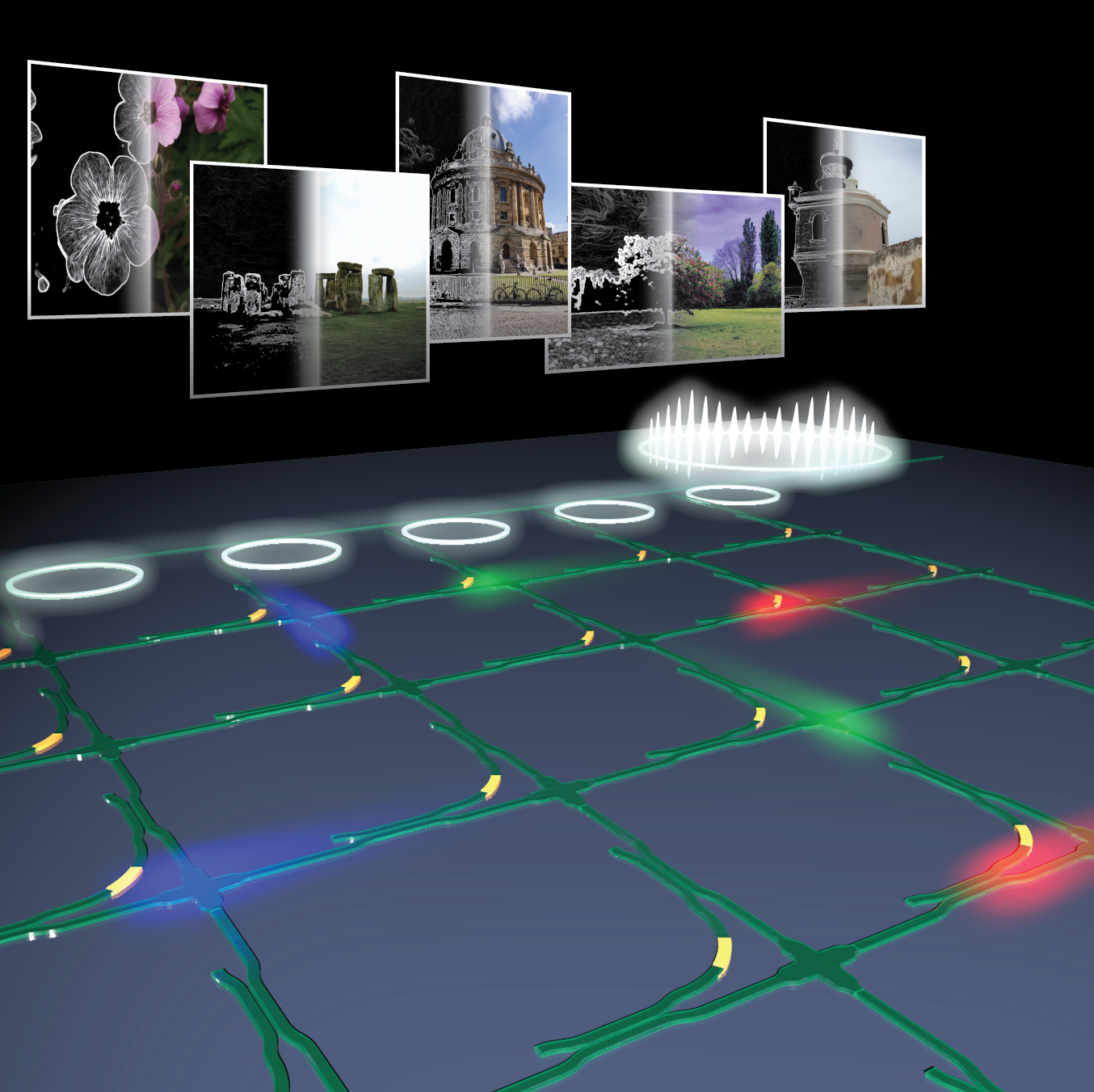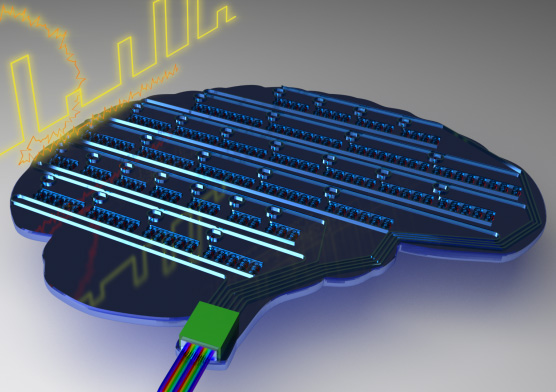Congratulations to Nikolaos Farmakidis from the Advanced Nanoscale Engineering group at Oxford for his new paper entitled, “Exploiting rotational asymmetry for sub-50 nm mechanical nanocalligraphy.” This novel approach to nanolithography enabled Nik and co-lead author Jacob Swett to create complex patterns at the nanoscale inspired by the artwork of calligraphy...
[Read More]

Welcome to the Youngblood Photonics Lab at Pitt
Our research combines unique optoelectronic materials with scalable photonic circuits to create new platforms for low-latency machine learning, reconfigurable photonic devices, and precision biosensing. Key to our work is a fundamental understanding of light-matter interaction at the nanoscale and use of advanced nanofabrication techniques to address major challenges facing these disciplines. The following areas of research in our group are: 1) Programmable Photonic Devices and Architectures for Machine Learning; 2) Waveguide-Integrated Circuits for Biosensing; and 3) Waveguide-Integrated 2D Materials for High Performance Optoelectronics.News:
Youngblood Photonics Lab awarded collaborative NSF grant for ultra-fast machine learning
Our collaborative proposal entitled, “A Hybrid Co-processing Unit (HCU) using Phase-change Photonics in CMOS for Large-scale and Ultra-fast Machine Learning Acceleration” has been funded by NSF! Our lab will be collaborating with lead PI Sajjad Moazeni (UW) and co-PIs Mo Li (UW) and Lei Jiang (IU) to develop hybrid electronic-photonic...
[Read More]
Nic receives MCSI scholarship for summer research
Photonic in-memory tensor core article is published in Nature!
Our photonic in-memory computing paper in collaboration with the Pernice group at the University of Muenster, the Bhaskaran group at Oxford, the Kippenberg group at EPFL, and Abu Sebastian at IBM Zurich has been published in Nature! This work represents a major step forward in optical computing and is the...
[Read More]
Youngblood Photonics Lab awarded NSF grant to improve phase-change device endurance
Nathan’s second NSF proposal entitled, “High-endurance phase-change devices for electrically reconfigurable optical systems” was funded! Our lab will be working in collaboration with co-PI Feng Xiong at Pitt to investigate the mechanisms limiting the endurance and cyclability of electrically-controlled, phase-change photonic memory. Read Pitt’s press release here. Link to NSF...
[Read More]
Vivswan joins the lab!
The lab welcomes Vivswan Shah to Pitt! Vivswan is a new PhD student starting this fall who graduated from Illinois College with a double major in Physics and Computer Science. He will be developing waveguide-integrated 2D optoelectronic memory using MoTe2 and will use his coding chops to automate experiments in...
[Read More]
Youngblood Photonics Lab wins an NSF grant to explore 2D PCMs
Our proposal on “Elucidating Structural Transformations in MoTe2 for Efficient Optoelectronic Memory” in collaboration with Feng Xiong from Pitt was funded! We are excited to better understand the mechanism for phase transition in the 2D material MoTe2 using optical and electrical techinques. See the following technical abstract for more information:...
[Read More]
Plasmonic nanogap enhanced phase-change devices with dual electrical-optical functionality
All-optical spiking neurosynaptic networks with self-learning capabilities
Our article on spiking neural networks using phase-change photonics has been published on Nature! News coverage includes an article by Geoffrey Burr in Nature News and Views and Oxford University. Many congratulations to first author Johannes Feldmann from Wolfram Pernice’s group. Read the article here.
Nathan joins the ECE Department at Pitt
Funding Sources:
Our lab acknowledges generous funding support provided by:







